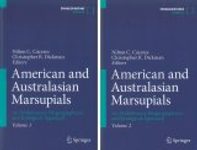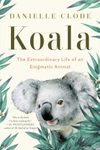About this book
The fifty-one species of kangaroos, wallabies and rat-kangaroos illustrated in this luxurious limited edition include some of the most popular and engaging of Australian marsupials. The print run is limited to 650 copies, which are all numbered and signed by the artist.
The 50 superb watercolour paintings by Rosemary Woodford Ganf reveal the fine anatomical detail of these creatures, and include authentic backgrounds showing typical plant species from the habitat of each animal. The illustrations are supported by authoritative scientific text by zoologists John Calaby and Tim Flannery. Each species is described by diagnosis, size, description, ecology, reproduction and distribution.
This is the third volume in the artist's series, Marsupials of Australia, one of the outstanding natural-history works of the twentieth century. Volume 1, covering the possums, koalas and wombats, is available on the antiquarian book market, and Volume 2 on the Carnivorous Marsupials and Bandicoots has limited availability.
Customer Reviews
Biography
Rosemary Woodford Ganf was born and educated in England, where her father, a country veterinary surgeon, gave her the love of animals that led her to paint wildlife. In 1969, after completing a foundation year in Fine Art and Design at art school in England, she moved to Uganda to live in the Queen Elizabeth National Park, where her father was working. This gave her a unique opportunity to learn about the anatomy and natural history of the animals she loved to paint.
Rosemary is essentially self taught. She has inherited a strong artistic talent from her mother, and has developed a distinctive style that combines fine detail and anatomical accuracy with a sense of design. She has been compared with John Gould, John J Audubon, and even to Albrecht Durer.
Since 1974,when she came to Australia, Rosemary has dedicated her talent to documenting many of Australia's lesser-known animals. In addition to Marsupials of Australia, her major commissions include paintings for Ansett Airways and Australia Post, and a collection of paintings for the publication, This Beloved Land, a limited edition of Australian poetry selected by R.M. Williams. More recently, Rosemary has been working on larger works in oil, incorporating wildlife in landscapes, and has just completed the first in a series of wildlife bronze casts.
Rosemary has had numerous exhibitions, most notably at the Tryon Gallery, Nairobi, and Australian Galleries, Melbourne. Her work is represented in collections in Europe, the USA and Australia.
In 1987, Rosemary Woodford Ganf won the Royal Zoological Society of New South Wales Whitley Book Award for the best illustrator of a limited edition for Volume 2 of Marsupials of Australia. In she won the Whitley Award for Volume 3 in the series.
John Calaby AO was a bibliographer and historian of Australian natural history. He accumulated over his lifetime a vast wealth of knowledge of mammalogy, entomology, anthropology, ecology and biogeography, and is widely remembered for his generosity in sharing his wealth of knowledge, understanding and scholarship with colleagues and friends. In 1977 he was awarded an honorary degree of Doctor of Science from the Australian National University.
For much of his professional life, John worked at the CSIRO in Canberra, which he joined in 1945 as a Technical Officer in the Division of Entomology. He retired in 1987 to become an Honorary Research Fellow, a position he held until his death.
John Calaby is probably best recognised for his contribution to Australian mammalogy, in particular to work on conservation biology. His legacy to wildlife and ecology and to scientific research is recognised internationally, and he provided the impetus for the finest Australian wildlife research library in the world, housed in the John Calaby Resources Centre at CSIRO Sustainable Ecosystems in Canberra.
With his vast and wide-ranging knowledge, John provided services to the Council of the Australian Mammal Society as editor of its journal and bibliographer of literature published on Australian mammals. He was also a member of the editorial advisory board of the Australian Journal of Ecology, a member of the Council of the Museums Association of Australia, an elected member of the Australian Institute of Aboriginal Studies and a member and committee member of the Canberra Archaeological Society.
In 1994, John Calaby was awarded the Order of Australia for his services to zoology and ecology.
Tim Flannery is an acclaimed naturalist, explorer, and writer. He has written the definitive environmental history of Australia, The Future Eaters (Reed, 1994), which was made into an award-winning television series, and six years later repeated the feat for North America with his ecological history, The Eternal Frontier (Text, 2001). He writes regularly for The New York Review of Books and The Times Literary Supplement, where his essays and reviews are enjoyed for their gentle wit and wide-ranging ideas.
Tim Flannery began his career in the arts, with a degree in English Literature, before embracing science and the fascinating world of fossils and living species. His love of the seventeenth and eighteenth century worlds is well known, and in addition to writing books, he has edited and introduced numerous works on historical subjects – from the earliest beginnings of the city of Sydney to the explorers of Australia's inland.
In some of the remotest parts of New Guinea and Indonesia he has been the first outsider to discover thirty new species of mammals, including two tree-kangaroos, and he is an astute and sympathetic observer of tribal cultures. In 1998-9 he lived in Boston while he was the Chair of Australian Studies at Harvard University, where he taught evolutionary history with an Australasian perspective to American students. Tim Flannery grew up in Melbourne and lives in Adelaide, where he is a Professor at the University of Adelaide and the Director of the South Australian Museum.






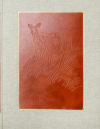









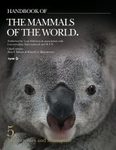



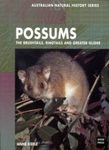
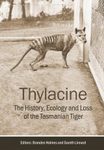
![Der Beutelwolf [The Tasmanian Tiger]](http://mediacdn.nhbs.com/jackets/jackets_resizer_medium/77/77224.jpg?height=150&width=106)
